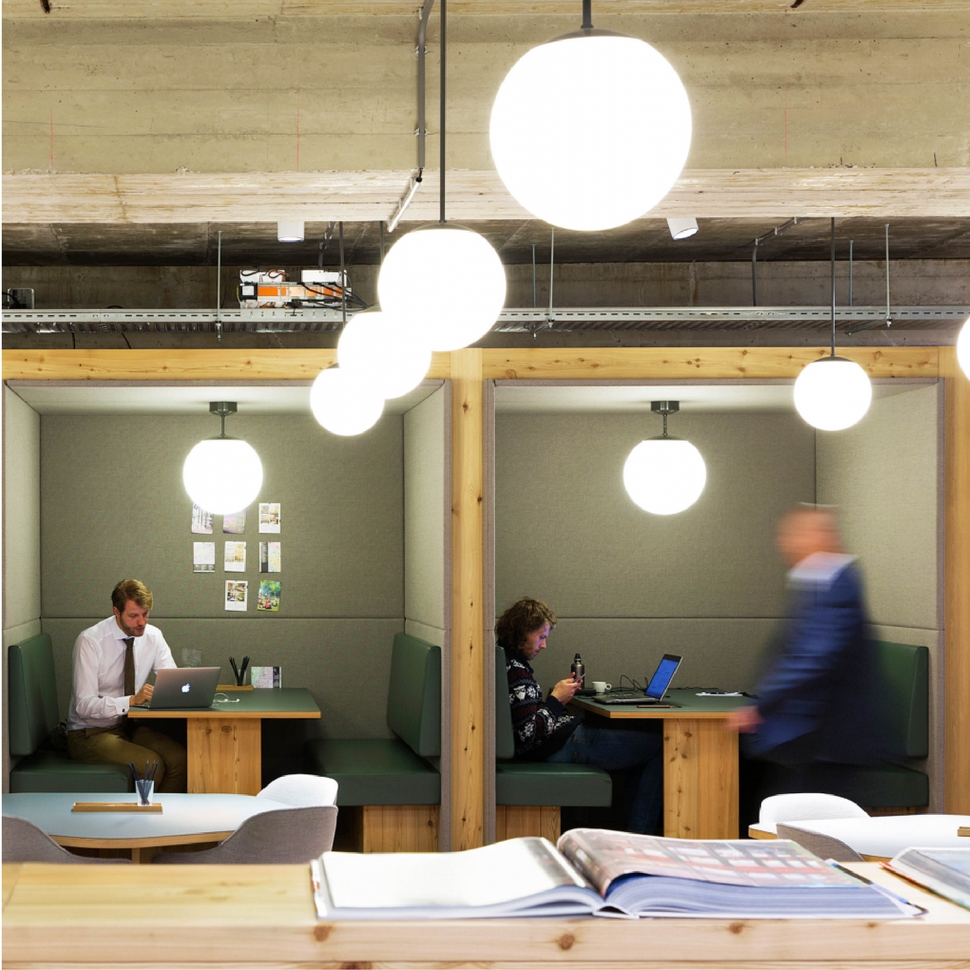This article is part of our ‘workplace design’ series.

If ever there was a question over the importance of workspace design, Frederique Keuning, founder and Creative Director at coworking group Spaces, answers it by recalling how they made a success of their very first workspace:
“Because the design was so good, the place sold itself.”
Speaking to Allwork, Frederique tells the story of founding Spaces in Amsterdam back in 2006, and how design played a vital role in the coworking brand’s rapid global expansion.
“We opened the first Spaces alongside one of the historic canals of Amsterdam with the idea that work should be more fun and inspiring.
“We believed, and still do, that work is a people business. With Spaces we want to bring people together, make them connect offline but also create just a very nice and inspiring place to sit down and get some work done.”
The idea sounds modest enough, but it took little more than 10 years for the Dutch coworking brand to multiply from a single workspace to a portfolio of 19 (at the time of writing). A further 27 are set to open in 2017 alone.
Its success can be attributed to various factors, notably partnering with Regus in 2015.
Yet that’s not the full story.
A big name (and a big pocket) gets you so far, but it’s still necessary to attract people to your workspace, convert leads to members, and keep them coming back.
That’s where design steps in, and according to Frederique, it’s one of the biggest contributors to their achievements.
“In the beginning, design was absolutely one of the most important aspects for Spaces,” she says. “The design and aesthetic resonated really well with a lot of different type of workers, from entrepreneurs to freelancers. For several reasons, it enabled us to make a place nobody had ever made before.
“The only thing we needed to do was to show people Spaces. And because the design was so good, the place sold itself.”
Spaces frequently works with renowned interior design and architectural studio, SevilPeach, to create its workspaces. In an online statement, SevilPeach declares their thinking behind the bond between exemplary design and places in which people want to work:
“A good looking office has no meaning if it cannot physically and emotionally support the people who inhabit it. A good office has to interact and support a vast group of workers, each of whom is effectively a client in their own right.”
As such, in every one of its coworking centres, Spaces aims to create a multi-functional environment that can fulfil the many different needs of its members:
“Our basic principles have always remained [the same]. Spaces’ design should be contemporary, be inspiring and always be the best quality,” says Frederique. “It should appeal to different types of people.“
The world of work is, you could say, messy. There’s no script. It fluctuates constantly, and success depends on those people who can adapt quickly to new trends or opportunities and inspire their teams to overcome challenges. Quick thinking requires fast action – and the ideal workplace is one in which these actions can be planned, thrashed out, scaled, and transformed into revenue.
“All of our locations have different kinds of workspaces and areas, for different types of work during the day. Meet-ups, job interviews, stand-ups, focus areas – it allows everyone to change their setting according to the time of day or the task at hand.”
At ground level, Frederique explains that the brand has strict design guidelines and a Design Manager who controls all locations – “of course that is challenging!” – which includes understanding cultural differences.
“The fact that we laid down a strong (design) foundation in The Netherlands makes it easier to reflect on what we have here and instill these learnings to other cities and countries. Once the basic design principles are in place and perfectly executed we can start and allow ourselves to have a bit more freedom, and try some new ideas.“
And with members including GitHub, GoPro and Uber, Spaces appears to be fulfilling its promise.


 Dr. Gleb Tsipursky – The Office Whisperer
Dr. Gleb Tsipursky – The Office Whisperer Nirit Cohen – WorkFutures
Nirit Cohen – WorkFutures Angela Howard – Culture Expert
Angela Howard – Culture Expert Drew Jones – Design & Innovation
Drew Jones – Design & Innovation Jonathan Price – CRE & Flex Expert
Jonathan Price – CRE & Flex Expert













